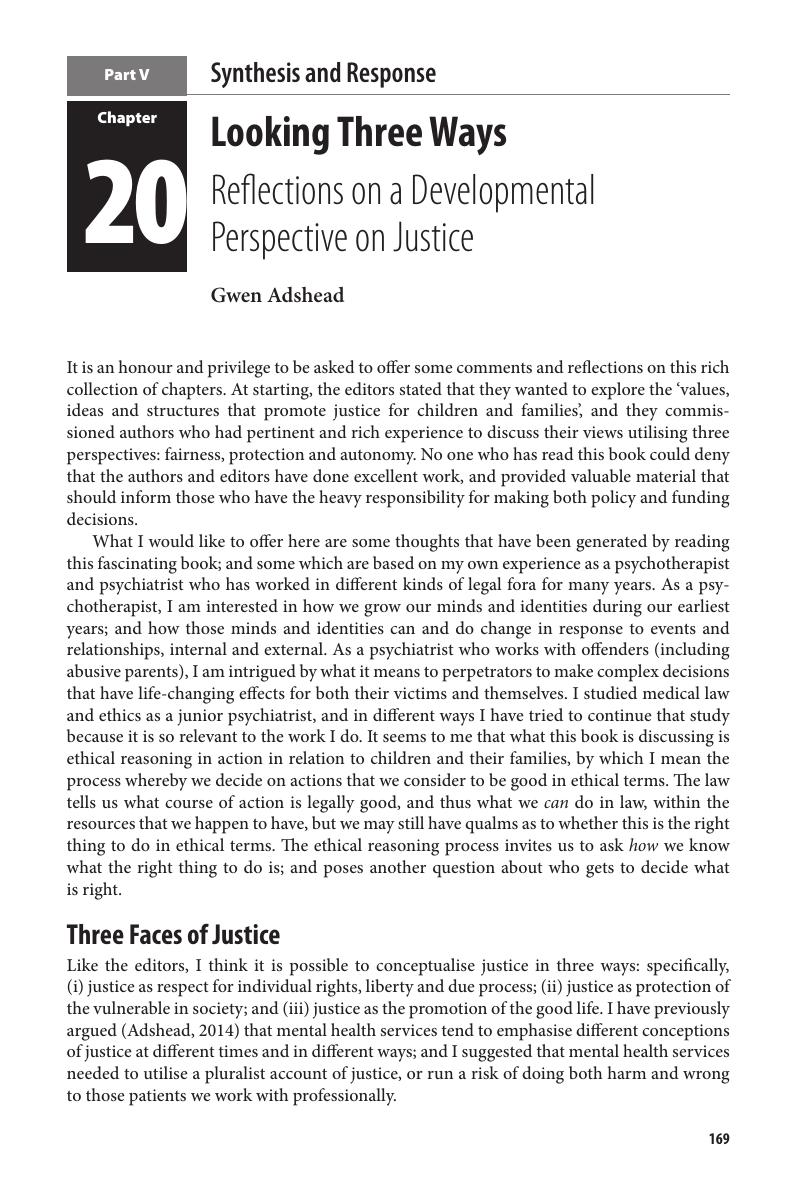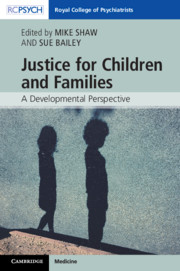Book contents
- Justice for Children and Families
- Justice for Children and Families
- Copyright page
- Contents
- Contributors
- Foreword
- Part I Overview
- Part II Fairness
- Part III Protection
- Part IV Autonomy
- Part V Synthesis and Response
- Chapter 19 How Reading This Book Can Contribute to Public Health Strategies for Children and Families
- Chapter 20 Looking Three Ways
- Index
- References
Chapter 20 - Looking Three Ways
Reflections on a Developmental Perspective on Justice
from Part V - Synthesis and Response
Published online by Cambridge University Press: 13 August 2018
- Justice for Children and Families
- Justice for Children and Families
- Copyright page
- Contents
- Contributors
- Foreword
- Part I Overview
- Part II Fairness
- Part III Protection
- Part IV Autonomy
- Part V Synthesis and Response
- Chapter 19 How Reading This Book Can Contribute to Public Health Strategies for Children and Families
- Chapter 20 Looking Three Ways
- Index
- References
Summary

- Type
- Chapter
- Information
- Justice for Children and FamiliesA Developmental Perspective, pp. 169 - 176Publisher: Cambridge University PressPrint publication year: 2018



